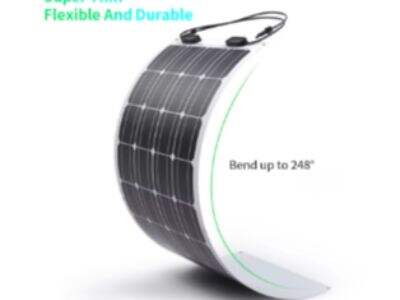When we look into the efficiency of monocrystalline solar panels in a grid-tied PV system, this can help see how they interact in order to provide electricity from the sun. The panels are fashioned from a single crystal structure, so that they can efficiently convert sunlight to electricity. When installed as part of a grid tie solar power system, they can help families and businesses generate their own electricity and reduce their dependence on the electric grid.
High energy outputs with monocrystalline panels for grid-tied PV systems
One of the best features of monocrystalline panels when it comes to grid-tied PV systems is the maximum energy generation. These panels are known to be highly efficient meaning they are able to harness more electricity from the sun in a smaller area, than other types of solar panels. “When we use monocrystalline panels in a grid-tied PV system, we are able to ensure we harvest the best amount of energy from the sun to use in our homes and businesses.
"We investigate the influence of monocrystalline solar panels on grid-tied
PV system performance. They are tough and last a long time, so they will be able to generate electricity for many years. When you install monocrystalline solar panels for house as part of a grid-tied PV system, they can provide the highest overall system efficiency. So, we can depend on solar power to generate electricity when we need it the most.
The advantages of Monocrystalline panels for a grid-tied
PV system This comparison can make us understand why these are commonly used in solar energy systems. They are efficient cells that are low-maintenance and long-lasting, and so they are a cost-effective option for converting sunlight into electricity. We can utilize monocrystalline solar panels in a grid-tied PV system, where we get to enjoy all of these benefits and contribute to reducing our dependence on fossil fuels.
What is the role of monocrystalline solar panels in grid-connected
PV systems that contribute to a greener future? These panels are essential for a solar system for grid-tie energy, as they take the sunlight and transform it into circulation through the system in home. Here in Ontario, by employing monocrystalline panels, we can help combat carbon emissions and the immediate threat of climate change. This puts them front and center of a cleaner, greener energy system of the future.
 EN
EN
 AR
AR BG
BG HR
HR CS
CS DA
DA NL
NL FI
FI FR
FR DE
DE EL
EL IT
IT JA
JA KO
KO NO
NO PL
PL PT
PT RO
RO RU
RU ES
ES SV
SV TL
TL ID
ID SK
SK UK
UK VI
VI HU
HU TH
TH FA
FA AF
AF MS
MS GA
GA MK
MK BN
BN KM
KM LA
LA MN
MN NE
NE MY
MY KY
KY





